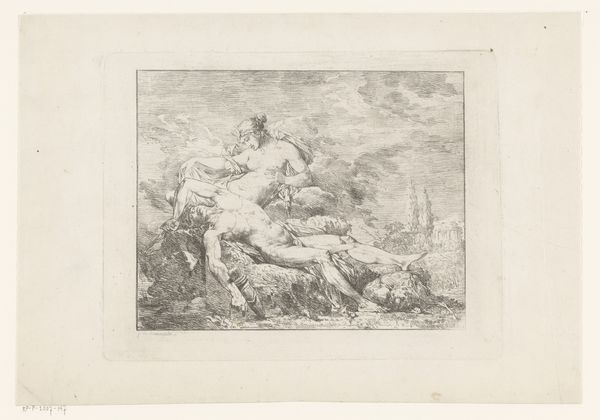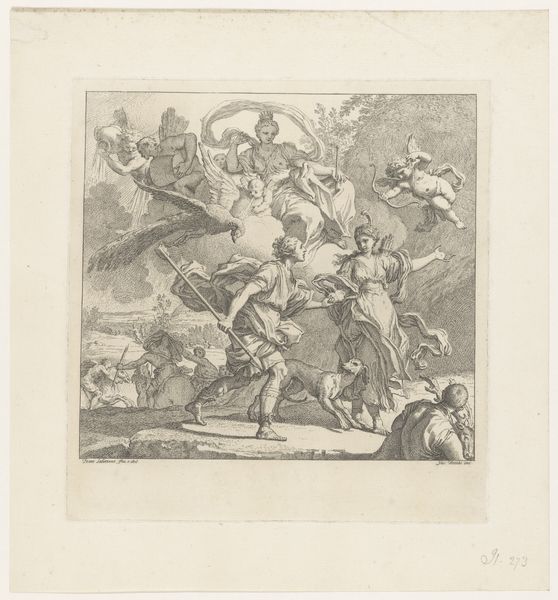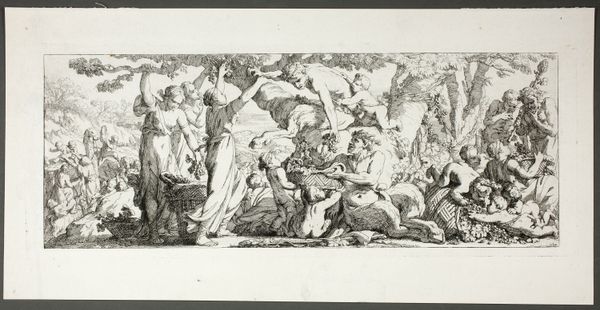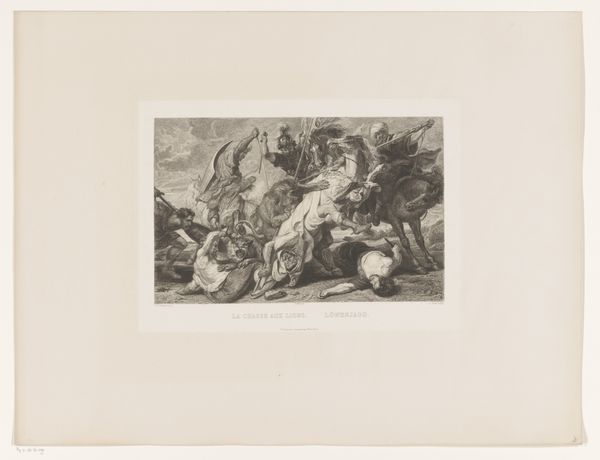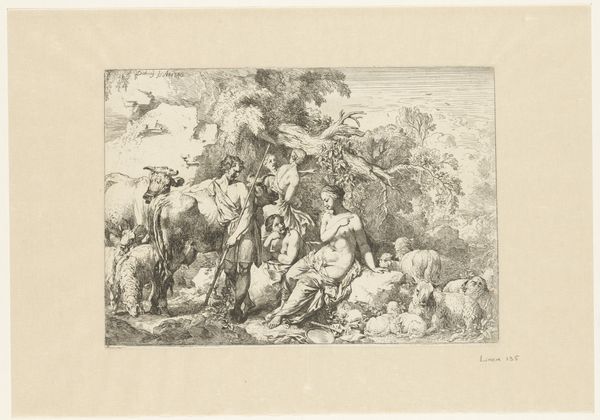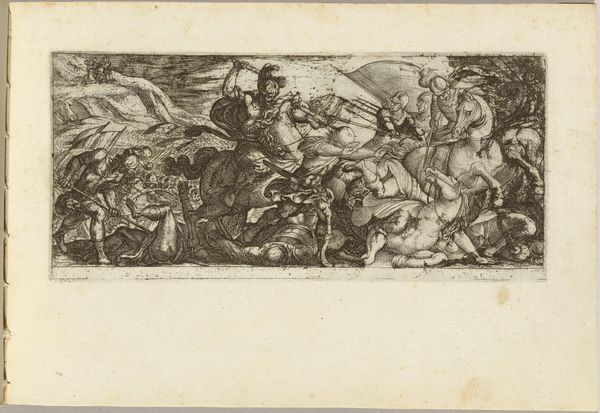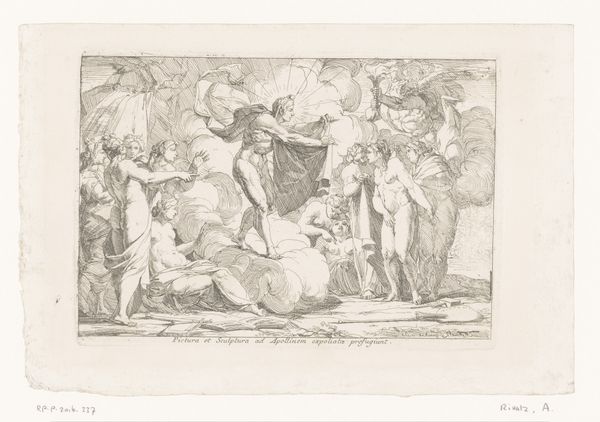
drawing, print, etching, engraving
#
drawing
#
baroque
# print
#
etching
#
figuration
#
history-painting
#
engraving
Dimensions: Plate: 2 3/4 x 4 5/16 in. (7 x 11 cm)
Copyright: Public Domain
Curator: At first glance, it's clear we're witnessing a dramatic moment. There's so much energy in this small space! Editor: Indeed. This is "The Rape of Persephone," an etching and engraving by Gaetano Gandolfi, created sometime between 1750 and 1760. You can currently find it here at the Metropolitan Museum of Art. Curator: Etching and engraving combined--that must have required considerable skill and labor. The layering of those processes to create such a sense of depth, look at those swirling lines of the stormy background! The physicality of the lines themselves creates the tension of the scene. Editor: Precisely! Gandolfi's choice to depict this scene would certainly resonate with the art-viewing public of his time. History painting was considered among the highest art forms because of its emphasis on morally instructive subject matter. This imagery was frequently circulated and reproduced. What political or social messages were implied by repeatedly presenting narratives of abduction? Curator: And the use of printmaking itself is intriguing, no? Prints democratized images. This scene, charged with classical narratives, suddenly became accessible to a much wider audience through this relatively inexpensive medium. The material and means of production shaped how the story reached, and was interpreted, by the public. Editor: Absolutely. The Baroque style amplifies the drama further, making this not just an act but a public spectacle. The chariot, Persephone's contorted body—it all feeds into a certain political theater. Who had the power to tell, circulate, and profit from these narratives, then and now? Curator: Ultimately, even this small etching asks us to consider power dynamics and the politics of representation, not only within the image itself, but also how images circulated, who owned them, and how meaning was constructed through their consumption. Editor: An unsettling piece that still challenges us today to consider not just the story, but the structures that perpetuate such narratives.
Comments
No comments
Be the first to comment and join the conversation on the ultimate creative platform.
